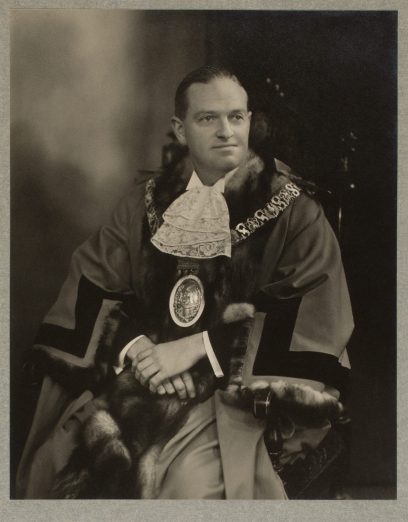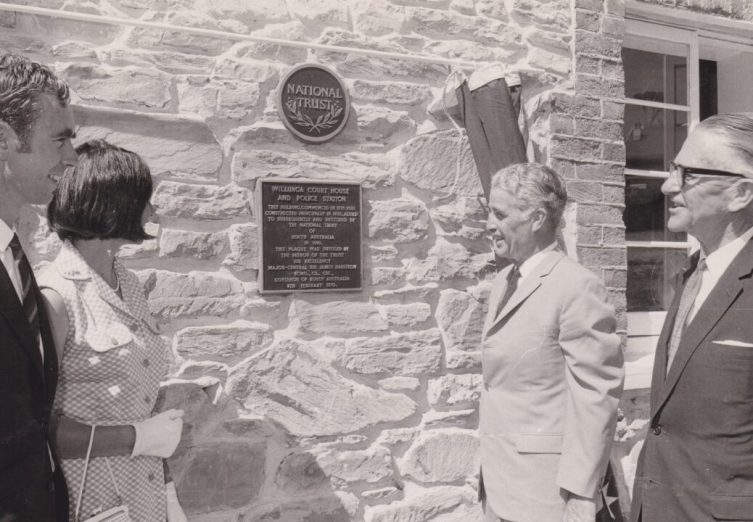In celebration of the National Trust of South Australia turning 70 this year, highly regarded historian and author Dr Susan Marsden explores the challenges that impelled its formation and those that have emerged in more recent times, drawing on her experience co-writing a book about our history to mark a previous major milestone.
Challenging Times was the title of the National Trust’s 50th anniversary book launched at Beaumont House on 8 December 2005. Then president Anita Aspinall remarked on that occasion: ‘We face, in a different way, the challenging times that the founders of the organisation faced in the 1950s’. There was, as now, public concern at the destruction wrought on nature and historic places by new and large-scale commercial and housing development and other construction, land clearance and mechanisation. Advocacy and altruism were crucial to creating and building the National Trust.
Incorporation by an Act of Parliament on 8 December 1955 was the culmination of years of effort to protect dwindling natural and cultural heritage in South Australia, and to form a National Trust modelled on that established in England in 1895. Australia’s first was formed in New South Wales in 1945. Following this, in South Australia there were actually two iterations – the National Trust for South Australia (1951) and a separate, successful National Trust of South Australia for the Preservation of Places of Historic Interest or Natural Beauty (1955), which absorbed the first organisation.
After years of lobbying, the reluctant but crucial support of a pro-development premier (Sir Thomas Playford) was gained for the proposed legislation. Further government support was provided in 1957 when the Commonwealth allowed donations to be tax deductible, and legislation in South Australia freed the National Trust from most state taxation. From the 1980s government funding was also provided for national and state heritage surveys through the National Estate program, and restoration of many National Trust properties. All the same, the organisation drew mainly for support on member subscriptions and bequests; donations of old buildings, museum objects and land for reserves; and the dedicated efforts of volunteers and a few paid staff.
Milestones
The new National Trust had to acquire members, find money, identify the heritage it hoped to save, and locate a headquarters. One hundred foundation members attended the first meeting on 7 March 1956. New members and event sponsors were recruited through Adelaide Establishment networks, including family connections and the professions. Among the founding members were several members of parliament; members of the Bonython, Angas, Hayward, Morphett, Simpson and Holden families; prominent research figures such as Sir Douglas Mawson and Norman Tindale; and writers, architects and artists. They included botanical illustrator and philanthropist Alison Ashby, who was elected to the first council and in 1956 donated property for a reserve at Eden Hills (Watiparinga).
There was also rapid growth in the country as farmers and townspeople set up branches. The first was formed at Renmark in 1956, which was also first to open a museum (1959). Challenging Times lists 61 branches with their founding dates and first chairs. This is by far the greatest number of National Trust branches (and local museums) in Australia. Their collections were crucial both in their own regions and as part of Australia’s ‘distributed national collection’.
The National Trust of South Australia acquired the largest portfolio of properties in Australia, emulating its British counterpart in concentrating on acquiring land and other properties until the 1980s when property management became a major challenge. In 1961 the National Trust embarked on its most famous activity, compiling a highly influential register of historic buildings. This work continued until 1990, with many of the places listed included in formal government national and state heritage registers. Unrelenting advocacy brought some impressive wins, such as saving Adelaide’s East End Markets and the Tram Barn at the Botanic Gardens. Delegations to Premier Playford to save the government-owned Austral House (Ayers House) bore fruit, and the National Trust’s head office was moved to the property’s Coach House in 1964. This long association with Ayers House underpinned a vehement campaign that returned the National Trust to the building in 2025.
Challenges of the 21st century
In the years after 2005, the National Trust had to address a severe problem of financial viability. Government grants to help maintain historic state-owned properties ceased, although the History Trust of South Australia still provided museum and related grants. Donations and bequests continued to add to the National Trust’s portfolio, such as Zelling Reserve on Kangaroo Island. Popular interest was also demonstrated with new branches being formed in places such as Burnside and Port of Adelaide.
Staff and supporters devoted thousands of hours to running museums, historical sites and nature reserves; conducting campaigns and events; and mending, weeding, writing and recording an astonishing range of natural and cultural heritage, including a register of significant trees. In 2009/10 alone, volunteers contributed more than 116,600 hours with an in-kind value of $2.56 million for heritage conservation. This was also a challenging time administratively as staff came and went, and their workplace shifted to several different headquarters.
Growing use of internet and mobile technologies reshaped how heritage was documented and shared. These new technologies helped link the past with the present, but many National Trust branches did not have the resources to obtain or use them. The ageing of National Trust members and volunteers and continuing poor levels of support at all levels of government are today’s challenges – at a time when reliable history-making and presentation is crucial to our modern societies.




